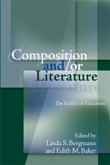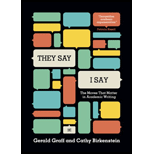In this second year of participation, I found the entries were easier to write and that I developed more practice and comfort with adding graphics and links to the posts. Creating posts is an enriching experience because the practice forces me to stop and think for a few moments about what I do that is working, not working, and what I can share with others that may help them along their path to being a great instructor.
This semester I began by writing about two tools that I enjoy using: the iPhone and the iPad. Then I wrote about one free program, Jing, that I use for Screencast videos for multiple purposes. In this post, I focused on how I use Jing to help English reading students to develop better pronunciation, fluency, and comprehension.
Concerning the experience as a whole, the gifts are great, but they were less of the reason for writing this year as compared to last year. Yes, Todd did go the extra mile to get me sorbet since I am allergic to milk, and it was very good, and the house plant and books were awesome, and the chocolate cookies were delicious, but seriously, I just enjoy being a part of something bigger where I can share with colleagues and actually go through the process of reflecting upon my own teaching and learning process.
Technically speaking, I really liked the opening page on the 9x9x25 blog where we could click on an individual's name and read just his/her posts. That way I could read all of my English teacher colleagues' posts at once, and then move on and read those from FYE classes, and more. The sad part about this year is that I didn't spend as much time commenting on people's posts or on receiving comments. I am not sure what the difference was, but I felt more like an island this time around.
Still and all, it was a great experience, and I will certainly participate again next year. I wish you all the best as we head into the final weeks of the semester. I will miss you all Friday at the luncheon, but I will be with you in spirit. Have a blessed Thanksgiving, and I look forward to seeing you all at Winter Institute.
Speaking of Winter Institute, I hope many of you will come and participate. I have heard there will be a session on December 8 for Quality Matters. There will be an opening panel discussing the new FYE103 class experience. I have also heard of an opportunity to come listen to people who have participated in the 9x9x25 experience, and that is just a taste of what is to come!
Sincerely,
Tina Luffman













